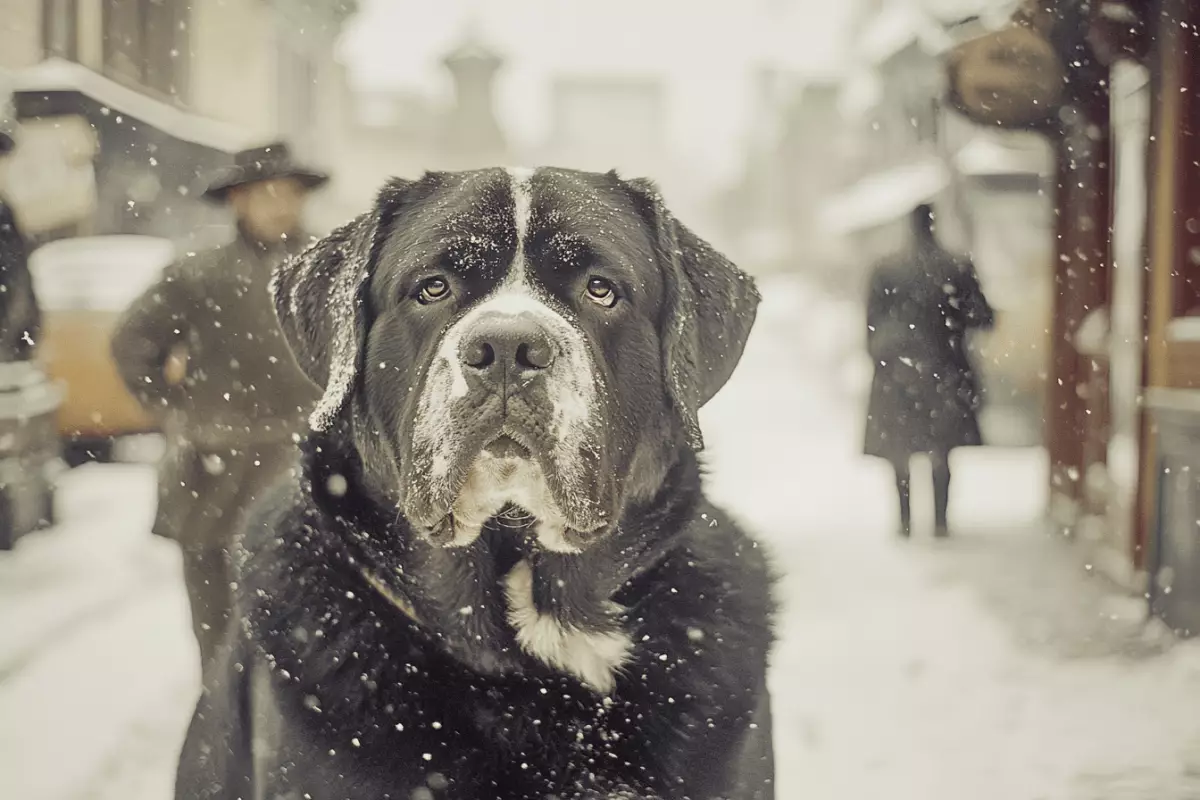Urban landscapes shift constantly, ebbing and flowing with the rhythms of human life. Amidst these transformations, one of the most striking casualties has been the disappearance of certain dog breeds that once held significant roles in our cities. These breeds served not only as faithful companions but also as critical players in the socio-economic fabric of urban environments. What remains of them today is not merely nostalgia but a reflection of how societal norms, technological advancements, and personal preferences reshape our environments. The once lively presence of these breeds echoes a past where they weren’t just pets but vital participants in the daily narrative of city life.
The Forgotten Guardians
Take, for example, the Russian Tracker Dog. Esteemed for its majestic golden coat and guarding capabilities, this breed was synonymous with wealth and prestige in urban settings. Its role as a protector shifted dramatically with the advent of technology, which rendered its physical prowess obsolete. This scenario underscores a recurring theme; the relentless march of progress often sidelines traditional values and the reliance on certain breeds as protectors. Interestingly, the very traits that made the Russian Tracker Dog desirable, its size and ferocity, became disadvantages in an era more suited to leashed and manageable pets.
Similarly, the Alpine Mastiff once played an essential role as a robust guardian in expanding European cities. The breed’s impressive stature and strength were used to safeguard businesses and estates, offering a protective presence at a time when safety was paramount. But as urban landscapes morphed, and compact, less intimidating breeds gained preference, the Alpine Mastiff was gradually nudged out of the picture. This reflects a critical evolution in human need: as lifestyle changes occur, so too does the necessity for certain breeds, leaving a poignant void in our collective memory.
The Rise and Fall of Fashionable Companions
The transition from utility to fashion was equally profoundly illustrated by the story of the Paisley Terrier. Initially adored for its luxurious coat and demeanor, it became the quintessential lapdog of the elite. Yet, its popularity waned as the Yorkshire Terrier took center stage, showcasing the fickle nature of canine fashion. This breed’s decline serves as a reminder: the companionship of dogs is often tied not only to their character but also to the whims of human preference. It raises questions about the narratives we create around pet ownership—what happens to a breed once it loses its cultural cachet?
Another notable example includes the elegant Braque du Puy, which thrived amidst city boulevards but eventually faded as urban hunting fell out of favor. It highlights how urbanization often reshapes not just landscapes but the fundamental fabric of life—including our relationships with dogs. This breed’s elegance and speed once made it invaluable to hunters, yet its absence in today’s sporting realm serves as a metaphor for the lost connections between nature and urban living—a reminder of how modern conveniences push aside time-honored traditions.
Hidden Histories of the Working Dogs
Conversely, consider the all-too-rare histories of some breeds, like the formidable Cordoba Fighting Dog. Born from a darker chapter of urban entertainment, this breed embodies the complexities of human involvement with animals—both as friends and as competitors. Once central to a brutal culture of dog fighting, the breed was quickly eradicated as societal views shifted toward animal rights. Its narrative compels us to reflect on the shadows of our civilization, where the value of breeds, like that of humans, often fluctuates under the weight of evolving morals.
Another breed that endured this fate is the Tahltan Bear Dog, initially a treasured companion to Indigenous tribes and early settlers. Its significance was embedded in export trading and hunting practices, yet it too diminished as priorities shifted over time. As technology evolved and the nature of work transformed, the Tahltan Bear Dog faded from existence—a poignant symbol of erased identities and relationships, both for dogs and the cultures that persistently embraced them.
A Reflection on Canine Legacy
As we step away from the histories of these once-prominent breeds, we uncover a tapestry interwoven with stories of neglect, transformation, and loss. These dogs played various roles—from pest controllers in industrial settings, like the old-style Manchester Terrier, to crucial contributors in maritime livelihoods, such as the St. John’s Water Dog.
Their vanishment begs the question: What are we losing as we reshape our cities? With each breed that disappears, we don’t just see a loss of a companion but a disconnection from the rich narratives embedded in our urban history. Our cities may become more streamlined, modern, and, ultimately, less populated with the breeds that carried them. We must strive to keep alive the essence of these canine companions and recognize their invaluable contributions to our shared urban journeys.

